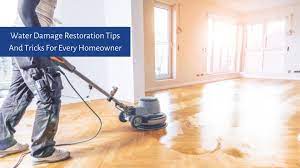Water Damage Restoration Cost Estimation
Estimating the cost of water damage restoration can be challenging as it depends on various factors, including the extent of the damage, the type of water (Category 1, 2, or 3), the materials affected, and the specific mold removal near me procedures required. Here are steps to help you estimate the cost of water damage restoration:
- Assessment and Inspection:
- Begin by conducting a thorough assessment and inspection of the water damage. Determine the affected areas and materials, as well as the source and category of water damage (Category 1, 2, or 3).

- Begin by conducting a thorough assessment and inspection of the water damage. Determine the affected areas and materials, as well as the source and category of water damage (Category 1, 2, or 3).
- Scope of Work:
- Define the scope of work needed for restoration, including water extraction, drying, cleaning, disinfection, and any necessary repairs or replacements. Be as detailed as possible.
- Material and Labor Costs:
- Estimate material costs, including any replacement materials, cleaning agents, disinfectants, and equipment such as dehumidifiers and fans.
- Calculate labor costs, factoring in the number of labor hours required for each phase of the restoration process.
- Equipment Rental:
- If you don’t own the necessary equipment, consider the cost of renting specialized restoration equipment, such as dehumidifiers, air movers, and moisture meters. Include the rental fees in your estimate.
- Removal and Disposal Costs:
- Estimate the costs associated with removing and disposing of damaged materials, especially if they are contaminated or hazardous. This may include disposal fees and labor costs.
- Cleanup and Decontamination:
- Factor in the cost of cleaning and disinfecting affected surfaces and materials to ensure the removal of contaminants and prevent mold growth.
- Drying Time:
- Consider the duration of the drying process, which can vary based on the extent of the damage. The longer it takes to dry, the more equipment and labor costs will accrue.
- Insurance Coverage:
- If the property owner has insurance coverage for water damage, coordinate with the insurance company to determine what costs are covered and what the policy deductible is.
- Additional Costs:
- Account for any unforeseen issues that may arise during the restoration process, such as hidden damage or complications that require extra materials or labor.
MRC Restoration
573-315-6143
- Overhead and Profit Margin:
- Include overhead costs, such as office expenses, insurance, and profit margin, in your estimate. This ensures that your business remains financially sustainable.
- Contingency:
- It’s advisable to add a contingency amount to your estimate (typically 10-20% of the total) to account for unexpected expenses or scope changes.
- Documentation and Communication:
- Maintain clear and detailed documentation of the estimate, including itemized costs and descriptions. Communicate the estimate to the property owner in a transparent and understandable manner.
- Customer Approval:
- Obtain approval from the property owner before starting the restoration work, ensuring that they understand the estimated costs and scope of work.
Keep in mind that water damage restoration costs can vary widely based on the specific circumstances of each case. It’s essential to provide a detailed and accurate estimate to avoid surprises and maintain trust with the property owner. Additionally, consulting with experienced professionals in the restoration industry can help you refine your estimation process and provide more accurate cost assessments

